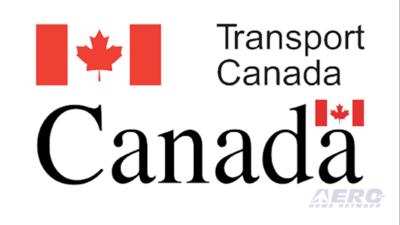Sat, Nov 28, 2020
The Government of Canada Has 'Modernized And Strengthened' ELT Regulations
The Minister of Transport has announced changes to the Canadian Aviation Regulations to mandate the use of digital emergency locator transmitters (ELTs) onboard aircraft flying in Canada.

The new, strengthened requirements will:
- improve passenger safety by increasing the likelihood that the distress signals will be received;
- enhance the efficiency of search and rescue operations by providing rapid, reliable and accurate position information to search and rescue services;
- reduce false alarms and the unnecessary deployment of search and rescue resources;
- harmonize emergency locator transmitter requirements with international standards; and,
- respond to a recommendation from the Transportation Safety Board of Canada, which called for the installation of digital emergency locator transmitters on all Canadian-registered aircraft and foreign aircraft operating in Canada.
Under the previous regulations, Canadian aircraft were required to be equipped with an analog ELT using the 121.5 MHz frequency. The regulatory changes announced today will require all Canadian aircraft to be equipped with a digital ELT capable of broadcasting simultaneously on frequencies of 406 MHz and 121.5 MHz, with some exceptions.
The MoT claims that using digital ELTs will reduce risk to human life and health as these devices provide more rapid, reliable and accurate position information to help search and rescue services identify and locate an aircraft in distress in a timely manner. Distress signals are received by a global satellite system that is monitored by search and rescue services, thereby increasing the chances of a successful rescue in the event of a downed aircraft.
The amendments apply to Canadian and foreign-registered aircraft operated in Canada, with the exception of gliders, balloons, airships, ultra-light aeroplanes and gyroplanes.
Commercial air operators, foreign aircraft and private operators have one year after the final publication of the amended regulations in Canada Gazette, Part II on November 25, 2020, to implement the amendments while recreational operators have five years to comply.
More News
Wind Shear A change in wind speed and/or wind direction in a short distance resulting in a tearing or shearing effect. It can exist in a horizontal or vertical direction and occasi>[...]
Aero Linx: The P-38 National Association “The Plane that Changed the Course of History!” is quite a bold statement, true. But as you visit this website dedicated to the>[...]
How To Get A Story On Aero-TV News/Feature Programming How do I submit a story idea or lead to Aero-TV? If you would like to submit a story idea or lead, please contact Jim Campbel>[...]
Airplane Impacted A Storage Unit Building About 0.43 Miles From The Approach End Of Runway 12 At 24C On July 21, 2025, about 1627 eastern daylight time, a Van’s Aircraft RV-1>[...]
From 2023 (YouTube Edition): To Preserve and Teach Incorporated as a non-profit domestic corporation in June 1997, the Army Aviation Heritage Foundation (AAHF) is a one-of-a-kind, >[...]
 ANN's Daily Aero-Term (08.04.25): Wind Shear
ANN's Daily Aero-Term (08.04.25): Wind Shear ANN's Daily Aero-Linx (08.04.25)
ANN's Daily Aero-Linx (08.04.25) ANN FAQ: Contributing To Aero-TV
ANN FAQ: Contributing To Aero-TV NTSB Prelim: Van's Aircraft RV-14
NTSB Prelim: Van's Aircraft RV-14 Classic Aero-TV: Portrait of the Army Aviation Heritage Foundation
Classic Aero-TV: Portrait of the Army Aviation Heritage Foundation



